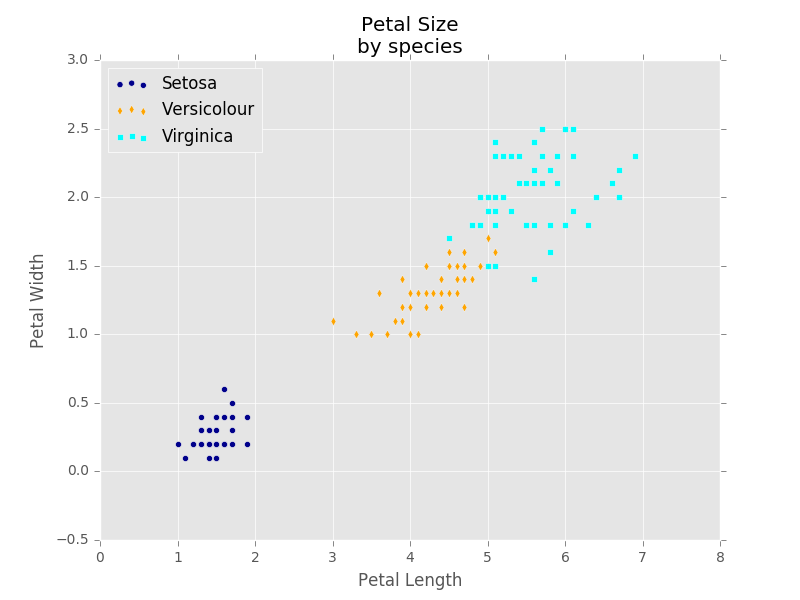

In the following example, we will draw a scatter plot with 6 (six) data points, and set specific size for the markers of these data points on the Scatter plot, with a list of numbers. Note: The length of the size list that we give for named parameter s, should be consistent with the lengths of x and y. (x, y, s=None, c=None, marker=None, cmap=None, norm=None, vmin=None, vmax=None, alpha=None, linewidths=None, *, edgecolors=None, plotnonfinite=False, data=None, **kwargs) The following is definition of scatter() function with s parameter, at third position, whose default value is None. import numpy as npĮxample usage: fig = plt.To set specific size for markers in Scatter Plot in Matplotlib, pass required sizes for markers as list, to s parameter of scatter() function, where each size is applied to respective data point. Here's an autoscale idea using percentiles and data-dependent margins to achieve a nice view. Automatically finding appropriate axes limits seems generally more desirable and easier than detecting and removing outliers. Removing the outliers would not have the same effect as just rescaling. in histogram plots such as the one in Joe Kington's answer) rescaling the plot could show that the outliers exist but that they have been partially cropped out by the zoom scale. # "~" operates as a logical not operator on boolean numpy arrays I tried some variants of this: import matplotlib.pyplot as plt circleplt.Circle((0,0),2) here must be something like ot() or not plt.
#PYPLOT SCATTER SMALL VALUES HOW TO#
In my case it's in a local utilities module surprisingly I didn't find a straight-forward description on how to draw a circle with matplotlib.pyplot (please no pylab) taking as input center (x,y) and radius r. Modified_z_score = 0.6745 * diff / med_abs_deviationĪs an example of using it, you'd do something like the following: import numpy as np Mykytka, Ph.D., Editor.ĭiff = np.sum((points - median)**2, axis=-1) The scatter plot looks as follows: I want to mark the smallest values of my x, y and z values with a different marker colour and size. Handle Outliers", The ASQC Basic References in Quality Control: Mask : A numobservations-length boolean array.īoris Iglewicz and David Hoaglin (1993), "Volume 16: How to Detect and Than this value will be classified as outliers. Observations withĪ modified z-score (based on the median absolute deviation) greater Thresh : The modified z-score to use as a threshold. Points : An numobservations by numdimensions array of observations Returns a boolean array with True if points are outliers and False

Here's a function that implements one of the more common outlier tests. You define the variables low, medium, and high to be tuples, each containing three values that represent the red, green, and blue color components, in that.

Otherwise, the variance/stddev that is calculated will be heavily skewed by the outliers.

Most tests for outliers use the median absolute deviation, rather than the 95th percentile or some other variance-based measurement. The syntax for scatter () method is given below: (xaxisdata, yaxisdata, sNone, cNone, markerNone, cmapNone, vmin. Scatter plots are widely used to represent relation among variables and how change in one affects the other. "This parameter shouldn't be over x because of blah."). The scatter () method in the matplotlib library is used to draw a scatter plot. If any kwargs are supplied, it is assumed you want the grid on and visible will be set to True. Parameters: visiblebool or None, optional. Ideally, you should incorporate a-priori information (e.g. (visibleNone, which'major', axis'both', kwargs) source. There's no single "best" test for an outlier.


 0 kommentar(er)
0 kommentar(er)
